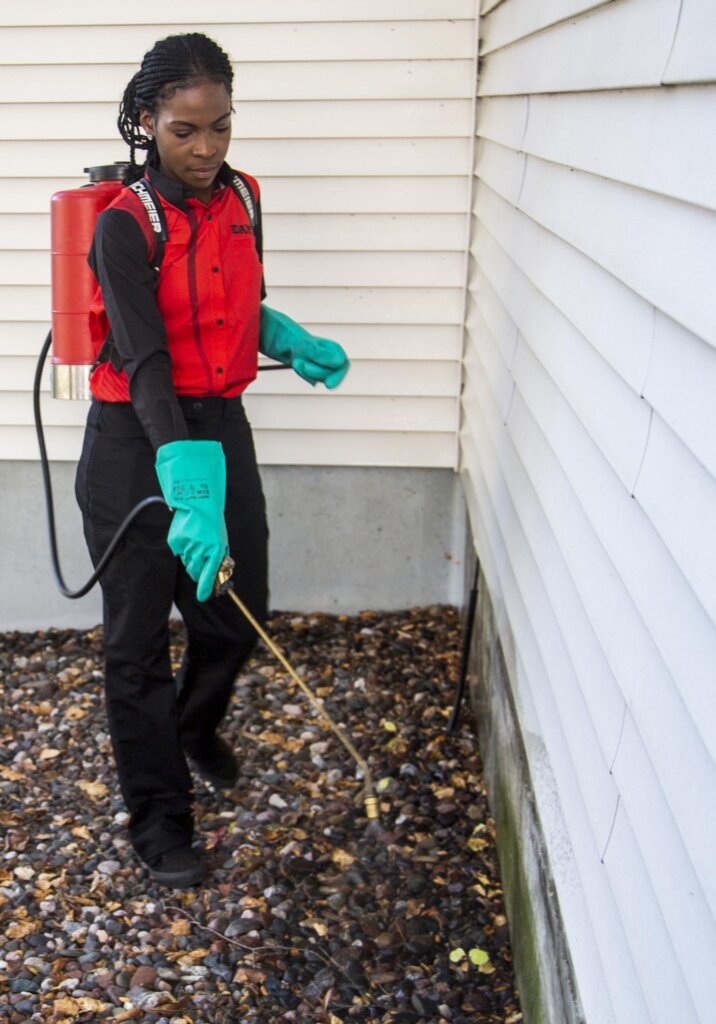Exploring Problem and Treatment Strategies on the planet of Insect Control
The landscape of bug control incorporates a myriad of challenges, particularly as invasions of typical house pests continue to develop. By incorporating preventative actions with advanced management methods, such as Integrated Bug Administration (IPM), home owners can much better safeguard their environments.

Common Home Pests
When it pertains to managing our space, recognizing typical house bugs is critical. These bugs not only disrupt our convenience but can also posture health and wellness dangers and damage home. One of the most common home pests include ants, roaches, rodents, termites, and bed bugs.
Ants, commonly seen foraging in kitchen areas, can infect food and develop huge nests. Roaches, understood for their durability, can trigger allergies and spread virus. Rats, including mice and rats, can cause architectural damages and carry diseases like hantavirus and salmonella. Termites, often described as "quiet destroyers," can jeopardize the integrity of wood structures, resulting in costly fixings. Bed insects, although not disease carriers, can create considerable discomfort via their bites and lead to emotional distress.
Identifying the signs of these parasites, such as droppings, nests, or bite marks, is essential for very early intervention (Pest Control Lockhart). Correct sanitation techniques, sealing entrance points, and preserving a clutter-free environment work preventative measures. By determining these common family pests and comprehending their behaviors, house owners can take proactive steps to minimize infestations, making sure a healthier living atmosphere
Recognizing Pest Infestations
Pest invasions can escalate swiftly, transforming a small annoyance into a considerable issue if not attended to immediately. Usual variables adding to problems consist of bad hygiene, architectural susceptabilities, and seasonal modifications that drive bugs inside your home.
Determining the kind of insect is vital, as different types exhibit varied behaviors and reproductive prices. As an example, rats may establish nests in hidden areas while pests like roaches prosper in moist environments. Early detection often pivots on identifying indications such as droppings, nibble marks, or unusual audios, which can suggest a problem prior to it ends up being serious.
Environmental problems likewise play a vital duty in bug proliferation. Cozy, damp climates can promote the fast growth of parasite populations, while changes in landscape design or building can inadvertently produce conducive settings. Regular assessments and preventative measures are vital to reducing the threat of infestations. An educated approach to comprehending these characteristics prepares for reliable insect monitoring strategies in the future.
Therapy Methods and Methods
Reliable therapy methods and techniques are vital for minimizing pest infestations and bring back a risk-free atmosphere. A complex strategy is often best, integrating chemical, biological, and mechanical methods customized to the certain parasite and the extent of the infestation.
Chemical treatments include making use of insecticides and herbicides, which can effectively eliminate pests. However, appropriate application and adherence to safety and security standards are important to reduce risks to people and non-target microorganisms. Integrated Bug Administration (IPM) motivates the cautious use chemicals as a last resort, relying rather on surveillance and limit levels to identify intervention demands.
Biological control methods include introducing all-natural killers or parasites to lower bug populations. This strategy is progressively popular, specifically in agricultural setups, as it promotes ecological sustainability.
Mechanical methods, such as catches and barriers, give immediate remedy for insects without presenting chemicals. Choices consist of sticky traps for pests or physical barriers for rodents.
Inevitably, the option of treatment technique should think about the specific bug, the setting, and prospective influence on human health and ecological communities. A balanced mix of these approaches can efficiently take care of infestations while promoting lasting pest control options.
Preventative Steps for Residence
Proactively addressing insect concerns prior to they escalate is crucial for keeping a healthy and balanced home environment (Pest Control Lockhart). Carrying out browse around these guys reliable preventive steps can substantially lower the likelihood of invasions, eventually guarding both your residential or commercial property and wellness

Proper landscaping also plays an essential role in prevention. Keeping hedges and trees cut away from the residence lowers the opportunities of parasites locating their method inside your home. Moreover, make sure that drain systems are functioning efficiently to stop standing water, which can attract in insects and other insects.
Finally, routine examinations are advisable. On a regular basis examining for signs of bug activity allows for very early treatment. By adopting these preventative actions, house owners can create a setting that is less hospitable to parasites, thus enhancing their general lifestyle and lowering why not try these out the need useful content for considerable bug control treatments.
Industrial Pest Control Methods
A comprehensive technique to commercial bug control is important for organizations aiming to preserve a safe and hygienic atmosphere. Effective strategies include a mix of regular assessments, staff member training, and the application of Integrated Parasite Management (IPM) methods.
Normal inspections allow very early discovery of insect task, permitting timely intervention. Services need to develop a routine schedule for these analyses, concentrating on high-risk areas such as kitchen areas, storeroom, and waste disposal sites. Worker training is similarly critical; staff should be informed on the indications of bug problems and the importance of reporting them right away.
Carrying out IPM techniques aids minimize pest issues sustainably. This includes habitat modification, such as sealing entry points and reducing clutter, as well as employing natural deterrents prior to considering chemical therapies.

In addition, collaborating with a licensed pest control service provider guarantees access to expert expertise and innovative therapy choices. This partnership can result in customized pest control plans customized to the certain requirements of business, reducing risks and enhancing total effectiveness. Eventually, a proactive and enlightened strategy promotes a pest-free environment, safeguarding both public wellness and service credibility.
Conclusion
In conclusion, efficient parasite control necessitates a detailed understanding of usual home bugs and their behaviors, combined with targeted therapy approaches. Applying precautionary procedures together with therapy techniques such as Integrated Parasite Management and organic control boosts the capacity to alleviate invasions.